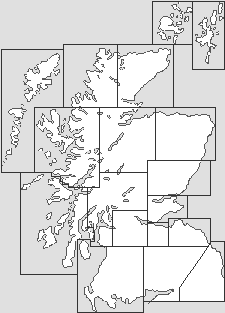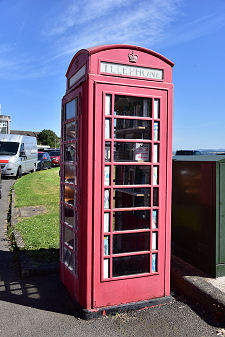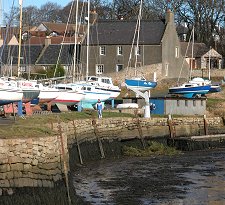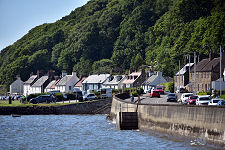 Red Row |
Limekilns, like its neighbour Charlestown, is a quiet and attractive village on the north shore of the Firth of Forth. It lies a little to the west of Rosyth and the Forth Bridges and its quietness is helped by being bypassed to the north by the main road from Rosyth to the Kincardine Bridges.
It hasn't always been quite so quiet here. As early as the 1300s, Limekilns, called Galletts at the time, served as the main port for the town of Dunfermline, under three miles to the north.
Early in the life of the village, the importance of the local limestone became clear, both for farming improvements and for mortar for stone buildings. An industry quickly grew up using kilns fuelled by charcoal and later coal to convert lime to quicklime, which was then shipped out to the rest of eastern Scotland. Today the only reminder of the industry in Limekilns is the name itself. From the 1750s the focus of the industry moved the mile or so west along the coast to Charlestown, whose vast industrial-scale limekilns continued to operate until 1956 and remain in place today. (Continues below images...)
 Limekilns from the West |
 Limekilns from the South-East |
A sign of Limekilns' early importance is its oldest building, the King's Cellar. This is reputed to have been used as a wine cellar by royalty residing in Dunfermline. In reality it is probably more likely to have been a general warehouse associated with the original harbour, dating back to the early 1500s.
Although it is difficult to imagine today, over its long life Limekilns has been home to a wide range of other industries as diverse as shipbuilding, soap making and brewing. For many centuries Limekilns was also the northern terminus for a ferry linking it to Bo'ness on the southern side of the Forth. This seems a rather indirect crossing but presumably worked well for those travelling between Dunfermline and Linlithgow. The ferry found an echo in Robert Louis Stevenson's "Kidnapped" as it was from Limekilns that David Balfour and Alan Breck were carried across the Forth in a rowing boat.
From 1702 the land behind Limekilns became home to Broomhall, a mansion built by Alexander Bruce of Broomhall, the Earl of Elgin. The current house on the site was started by his descendent, Charles, the 5th Earl of Elgin in the 1760s, though work continued on improvements into the 1800s.
The family did much to shape the area around Limekilns. They replaced Limekilns' original harbour with Bruce Haven, at the eastern end of the village, in about 1750. Its role was to export coal from the increasingly important Fife coalfields. It was also the Bruces who built Charlestown and moved the lime industry there from Limekilns.
Today's village of Limekilns occupies the low lying land between the harbour at Bruce Haven and the higher ground behind. A tail extends to the west along the coastal road. It can become quite busy on the sort of day shown in the photographs on this page.
 Beach on the West Side of Limekiln Pier |

|
|
|
Visitor InformationView Location on MapWhat3Words Location: ///tungsten.newsreel.cable |
 The Bruce Arms |
 Main Street |
 Coorie by the Coast |
 Telephone Box Library |
 The Pier and the Forth Bridges |
 Bruce Haven |
 Jaspar |
 Boats at Bruce Haven |








